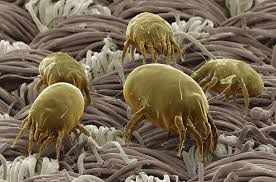The Human Skin Renewal Process.
The human body on average, shed around 600,000 skin particles per hour. (Approximately 1.5 pounds of skin cells per year). Our skin is the body’s largest organ, and it undergoes constant renewal. The outer layer, called the epidermis, made up of dead skin cells that flake off and are replaced by new cells rom underneath over. The skin renews itself completely about every 28 to 40 days depending on age and other factors. Shedding skin is a natural and healthy process. It helps to protect against infection by removing dead cells that might harbor bacteria or other pathogens. Did you know that most of the dust in your home consists of dead skin? While this may sound gross, it is just simply a part of how our bodies maintain themselves.
Skin shedding, also known as desquamation, is an essential part of the skin’s natural renewal cycle. The outermost layer of the skin, the epidermis, is composed of tightly packed cells known as keratinocytes. These cells are produced in the deeper layers of the epidermis and migrate upward as they mature. Eventually, they become corneocytes, which are dead skin cells that form a protective barrier. The body sheds these corneocytes regularly to remove damaged or dead skin cells, making room for newer and healthier skin cells. This process helps maintain the skin’s resilience, elasticity, and ability to protect against environmental stressors like bacteria, toxins, and UV radiation. Without skin shedding, the outer layer would become thick, rough, and prone to infection.
Studies suggest that up to 70% of indoor dust consists of skin particles. These microscopic flakes become airborne and settle on surfaces, often combining with other particles such as pollen, fabric fibers, and pet dander. However, skin cells themselves are not harmful. They are primarily composed of keratin, a protein that is also found in hair and nails. Additionally, skin particles provide a food source for microscopic organisms like dust mites, which are common in household environments. While dust mites are generally harmless, their presence can trigger allergic reactions or respiratory issues in sensitive individuals. This is one of the many reasons it is so important to change your air filters in your home regularly. If you are sneezing a lot at home, this may be a reason. Regular cleaning practices, including dusting, vacuuming, and air purification, can help manage the buildup of skin cells and other particles. Additionally, maintaining proper skin hygiene through cleansing and exfoliation reduces excessive shedding, contributing to a cleaner environment. Several factors influence the rate and quality of skin shedding.
Age is a primary factor, as the skin’s renewal process slows down over time. While a young adult’s skin may renew itself in under a month, this can extend to 45 days or longer in older adults. Consequently, mature skin often appears duller and may require more external exfoliation to maintain a healthy glow. Lifestyle habits also play a role in skin health. A balanced diet rich in vitamins, minerals, and antioxidants supports skin cell production and repair. Specifically, nutrients like vitamin A, vitamin C, and omega-3 fatty acids are crucial for maintaining a smooth and resilient complexion. Meanwhile, dehydration, poor nutrition, and smoking can impair the skin’s ability to shed and regenerate properly. Furthermore, skincare routines can either enhance or disrupt the natural shedding process. Gentle exfoliation using scrubs, chemical exfoliants, or cleansing brushes can remove excess dead skin cells, promoting a brighter and smoother appearance. However, over-exfoliation can lead to irritation, inflammation, and a compromised skin barrier. Therefore, it is essential to find a balanced skincare regimen suitable to your specific skin type. Keeping in mind that the human body is ever changing, so keeping an updated skin care routine is essential for great skin health.
While the shedding of skin cells is a normal biological process, abnormalities in this cycle can lead to skin disorders. Conditions such as psoriasis involve an accelerated skin cell turnover, resulting in the buildup of thick, scaly patches. Similarly, seborrheic dermatitis and eczema can cause excessive flaking, redness, and irritation. On the other hand, insufficient shedding can lead to clogged pores, contributing to acne or blackheads. In such cases, treatments like chemical exfoliants containing alpha hydroxy acids (AHAs) or beta hydroxy acids (BHAs) are often recommended to remove excess skin cells and prevent breakouts.
The process of shedding approximately 600,000 skin particles per hour may sound astonishing, but it is a testament to the body’s remarkable ability to regenerate and protect itself. Skin shedding is a vital function that maintains the integrity and appearance of our skin while defending against environmental threats. From the natural skin renewal cycle to its impact on household dust and skin health, this biological process remains an essential part of our everyday lives. Understanding how and why the skin sheds allows us to care for it effectively. By maintaining a balanced diet, staying hydrated, and adopting an appropriate skincare routine, we can support our skin’s renewal process and ensure it remains healthy and resilient. In embracing this natural phenomenon, we gain a deeper appreciation for the intricate mechanisms that keep our bodies functioning at their best. While earning an urge to keep your home cleaner.
Support the author:
Tips are not necessary but greatly appreciated and help keep this blog going weekly. Thank you in advance and take care!
Zelle: Thyre127@gmail.com
Cashapp: $Thyre127







I like that you added a place to tip you, you deserve it! I sent a little something as my appreciation for what you are doing!
ReplyDeleteAww that is so thoughtful of you! Thank you very much!
DeleteOmg ewwww
ReplyDelete